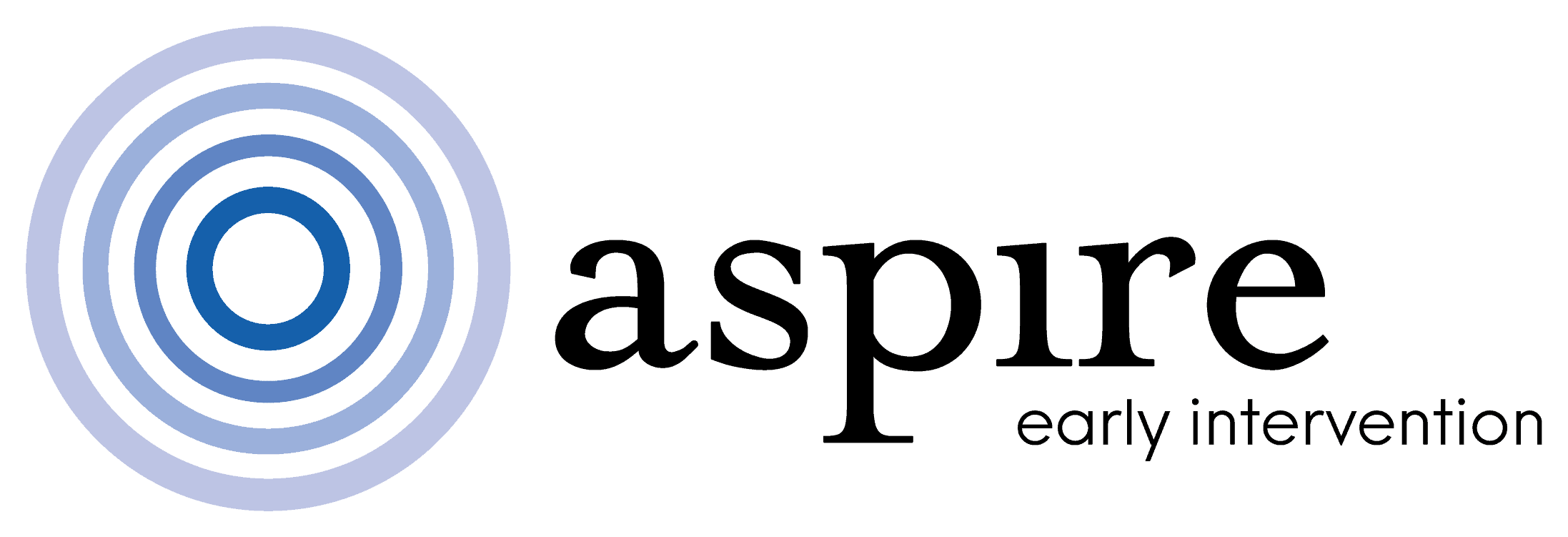The Early Start Denver Model (ESDM) is an early intervention therapy designed for young children with autism, usually between 12 and 48 months old. It blends techniques from ABA and developmental psychology to improve cognitive, social, and language skills. ESDM emphasises learning through play and everyday activities, making it a comprehensive approach to support a child’s development.
Key Takeaways
- The Early Start Denver Model (ESDM) is a holistic behavioural therapy for children with autism aged 12 to 48 months, integrating principles from Applied Behavioural Analysis (ABA) and developmental psychology to enhance cognitive, social, emotional, and language skills through positive play-based activities.
- Research supports the effectiveness of ESDM, showing significant improvements in social communication, cognitive skills, and adaptive behaviours in children with autism, with brain scans indicating enhanced neurological development due to the therapy.
- Aspire Early Intervention offers comprehensive ESDM-based programs in Sydney, Canberra, and Melbourne, featuring individualised sessions, parent training, and continuous support to help children with autism develop essential skills and transition to mainstream education.
What is the Early Start Denver Model (ESDM)?
The Early Start Denver Model (ESDM) is a tailored behavioural therapy intended for children with autism in the 12 to 48 month age range. It is designed to support their development and address specific needs during this critical period. It fuses principles from Applied Behavioural Analysis (ABA) and developmental psychology to bolster cognitive, social, emotional, and language abilities in young children with ASD. This integration of techniques aims to provide a holistic approach to early intervention, ensuring all aspects of the child’s development are addressed.
Building positive relationships through play is central to ESDM. By engaging children in fun, everyday activities, ESDM helps develop essential skills like communication, social interaction, and cognition. This approach not only aims to enhance developmental skills but also strives to create a warm and nurturing environment where children feel safe and motivated to learn.
Therapy sessions are conducted during natural play and everyday activities, encouraging spontaneous interaction and communication. This method ensures children learn as teaching tactics are embedded in meaningful contexts, making it more relevant and enjoyable for the child. As a result, children are more likely to engage and progress in their developmental journey.
Key Components of ESDM
ESDM therapy is built on several key components that make it effective and engaging for young children. One of the fundamental aspects is the individualised curriculum, which ensures each child’s unique needs and developmental level are specifically addressed. This personalised approach allows therapists to tailor interventions that are most likely to benefit the child, thereby enhancing their learning experience.
Another critical element of ESDM is the use of natural play-based activities. These activities are designed to promote learning opportunities in contexts that are engaging and meaningful for the child. Some examples of natural play-based activities include:
- Pretend play
- Sensory play
- Social play
- Art and craft activities
Positive reinforcement is also a cornerstone of ESDM, used to encourage desired behaviours and enhance the overall learning experience.
Joint activity routines, which involve shared experiences and collaborative play, are essential in fostering social interaction, communication skills, and social and cognitive skills.
How ESDM Benefits Autistic Children
ESDM therapy offers a comprehensive and effective approach to early intervention for young children with autism spectrum disorder. By focusing on early intervention, ESDM helps children make significant progress in social skills, language skills, and cognitive abilities. This early start is crucial as it sets the foundation for future learning and development, giving children the best possible chance to thrive.
Moreover, ESDM improves adaptive behaviours, helping children with autism develop essential life skills and become more independent. Parents and caregivers are essential to the process, as they receive training and support to implement ESDM techniques at home. This collaborative approach ensures that the child receives consistent and comprehensive support across different environments, maximising the benefits of the therapy.
Early intervention is key, and starting with an assessment can help early childhood educators identify the best strategies to support a child’s development.
Research Supporting ESDM
The effectiveness of the Early Start Denver Model (ESDM) is well-supported by research, showcasing significant improvements in various developmental domains for children with autism. Multiple studies have demonstrated that ESDM can lead to substantial gains in social communication, cognitive skills, and adaptive behaviours. These improvements are not limited to children with mild challenges but extend to those with significant learning difficulties as well.
One notable study observed changes in brain activity related to social and communication skills in children undergoing ESDM therapy. Brain scans revealed enhanced brain function, indicating that ESDM not only improves observable behaviours but also fosters neurological development. Other studies have reported significant improvements in cognitive skills and language abilities, further underscoring the comprehensive benefits of ESDM.
Parent-implemented ESDM (P-ESDM) has also shown positive outcomes, with trained parents effectively delivering the intervention and achieving similar results to professional therapists. This approach not only empowers parents but also ensures children receive continuous support in their natural environments. A randomised controlled trial demonstrated that children receiving ESDM intervention exhibited a significant developmental acceleration, particularly in social and communication skills.
What to Expect During ESDM Therapy Sessions
ESDM therapy sessions are designed to be collaborative, engaging, and tailored to the child’s needs. The therapy involves a team of professionals, including a certified ESDM therapist, allied health professionals, and the child’s parents or caregivers. This team works together to provide comprehensive support and ensure the therapy is consistent across different settings.
Therapy sessions, including those in adolescent psychiatry, can take place in various environments, such as home, clinics, and schools, and can be conducted both in group and one-on-one settings. This flexibility in settings allows for a more naturalistic approach, integrating therapy into the child’s daily life. Sessions typically last between one to two hours per week over a 12-week period, although more intensive schedules can be arranged based on the child’s needs. Activities during sessions include completing puzzles, building block towers, playing with bubbles, reading books, and singing.
ESDM therapists focus on eight core developmental domains, including those related to developmental disabilities and developmental disorders:
- Social skills
- Cognitive skills
- Social and pretend play
- Personal independence
- Fine and gross motor skills
- Communication
By targeting these areas, ESDM provides a well-rounded approach to early intervention, ensuring that all aspects of the child’s development are addressed.
Setting Goals in ESDM
Goal setting in ESDM therapy is a collaborative process involving the therapist, parents or caregivers, and other professionals involved in the child’s care. Parents are encouraged to share their values, hopes, and priorities to help shape the therapy goals. This ensures the therapy is aligned with the family’s expectations and the child’s unique needs.
The goals are based on the child’s individual strengths and challenges, identified through an initial assessment using the ESDM curriculum checklist. This checklist helps set a baseline for tracking the child’s progress and adjusting the therapy plan as needed. By setting clear and measurable goals, ESDM therapy can focus on specific areas for improvement, making the therapy more effective.
Tracking Child’s Progress
Tracking a child’s progress is a crucial aspect of ESDM therapy. The ESDM checklist is designed to monitor various skills and behaviours targeted for improvement, such as social communication, play skills, and cognitive development. This tool provides a structured way to assess the child’s development and identify areas that may need additional support or intervention.
The checklist is revisited every 12 weeks to evaluate the child’s progress and adjust the therapy plan accordingly. This regular reassessment ensures the therapy remains responsive to the child’s evolving needs. Parents and caregivers are also involved in this process, gaining insights into their child’s strengths and challenges through the ESDM checklist. This collaborative approach helps maintain a consistent and effective therapy plan.
Ongoing Support and Reassessment
Ongoing support and reassessment are vital components of the ESDM therapy process. Continuous support helps ensure the child continues to make progress and achieve their developmental goals over time. Parents and caregivers play an essential role in this process, working closely with the ESDM team to provide consistent support at home and in other settings.
The ESDM team provides regular check-ins, progress updates, and additional resources to support ongoing development. Parents receive guidance and advice on how to best support their child’s learning and growth, making them active partners in the therapy process. This collaborative effort helps create a supportive environment that fosters the child’s development and well-being.
Aspire’s Role in Delivering ESDM
Aspire Early Intervention plays a crucial role in delivering ESDM therapy to families in Sydney, Canberra, and Melbourne. Aspire offers comprehensive programs grounded in the Early Start Denver Model (ESDM) and Early Intensive Behaviour Intervention (EIBI) techniques. These programs are designed to provide tailored support and ongoing assistance to children with autism, helping them develop essential skills and reach their full potential.
The First Steps program at Aspire includes:
- A focused 12-week plan.
- Individual sessions tailored to each child.
- Extensive parent training.
- Team meetings and parent coaching sessions to set and review goals for the child’s plan.
This program empowers parents to become proactive partners in their child’s learning journey, ensuring that the therapy is consistent and effective.
Families choose Aspire for its dedicated team and family-oriented approach. The success of Aspire’s programs is evident as many children transition to mainstream education and test within the normal range of assessments. Aspire’s commitment to providing high-quality early intervention services makes it a trusted partner for families seeking support for their children with autism.
Summary
In summary, the Early Start Denver Model (ESDM) offers a comprehensive and effective approach to early intervention for young children with autism. By integrating principles from ABA and developmental psychology, ESDM helps children develop essential skills in a natural and engaging environment. The collaborative approach, involving therapists, parents, and caregivers, ensures the therapy is tailored to each child’s unique needs and is consistent across different settings.
Early intervention is crucial for children with autism, and ESDM provides a powerful tool to help them reach their full potential. Aspire Early Intervention’s commitment to delivering high-quality ESDM therapy makes it a trusted partner for families seeking support. With the right support and intervention, autistic children can thrive and achieve their developmental goals.
Frequently Asked Questions
What makes ESDM different from other autism therapies?
ESDM stands out from other autism therapies due to its combination of ABA principles and developmental psychology, emphasising the importance of positive relationships through play and natural activities.
How long does it take to see progress with ESDM therapy?
It varies for each child, but significant improvements with ESDM therapy are often observed within a 12-week period. Regular reassessments are crucial for tracking progress and adjusting the therapy plan.
Can parents implement ESDM techniques at home?
Yes, parents can implement ESDM techniques at home with training and support from certified ESDM therapists.
What activities are included in ESDM therapy sessions?
ESDM therapy sessions include a range of activities like pretend play, building blocks, singing, sensory activities, and social games, all designed to align with the child’s developmental level and interests.
How can Aspire support families in implementing ESDM?
Aspire can support families in implementing ESDM through comprehensive programs, workshops, and training based on ESDM techniques, and ongoing support, regular check-ins, and resources. This ensures families can effectively implement ESDM therapy.


